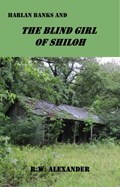The summer of 1940 had been long and hot with very little rain to curb the drought. Though only the fourth day of July, trees in the park had already lost their springtime green, some were even dropping brown leaves, hinting at the autumn to come. Shrubs of every kind that grew in the park were the first to be consumed by the fire. Then the blaze blasted the trees into fireballs like the Roman Candles set off the night before. Random fireworks set off the night before, sent balls of fire into the trees, birthing one of the worst fires in Tennessee forest history.
The fire began slowly. Fire, no respecter of historic sites, angrily leapt from spark, to flicker, to flame, to an uncontrollable blaze. The west end of the park became a frenzied fire storm that leapt across the Corinth Road and began its entrance into one of the south’s most storied National Park Cemeteries.
Deer, turkey, raccoons and possums fled from the fire, leaving their homes for less fatal grounds they were now occupying. Small ponds that watered cattle were soon sucked dry of their moisture, leaving only a few gasping fish, two snapping turtles and three confused white tailed deer. Rabbits bolted from burrows, determined to outrun the flames that destroyed their homes.
Nothing was safe!

